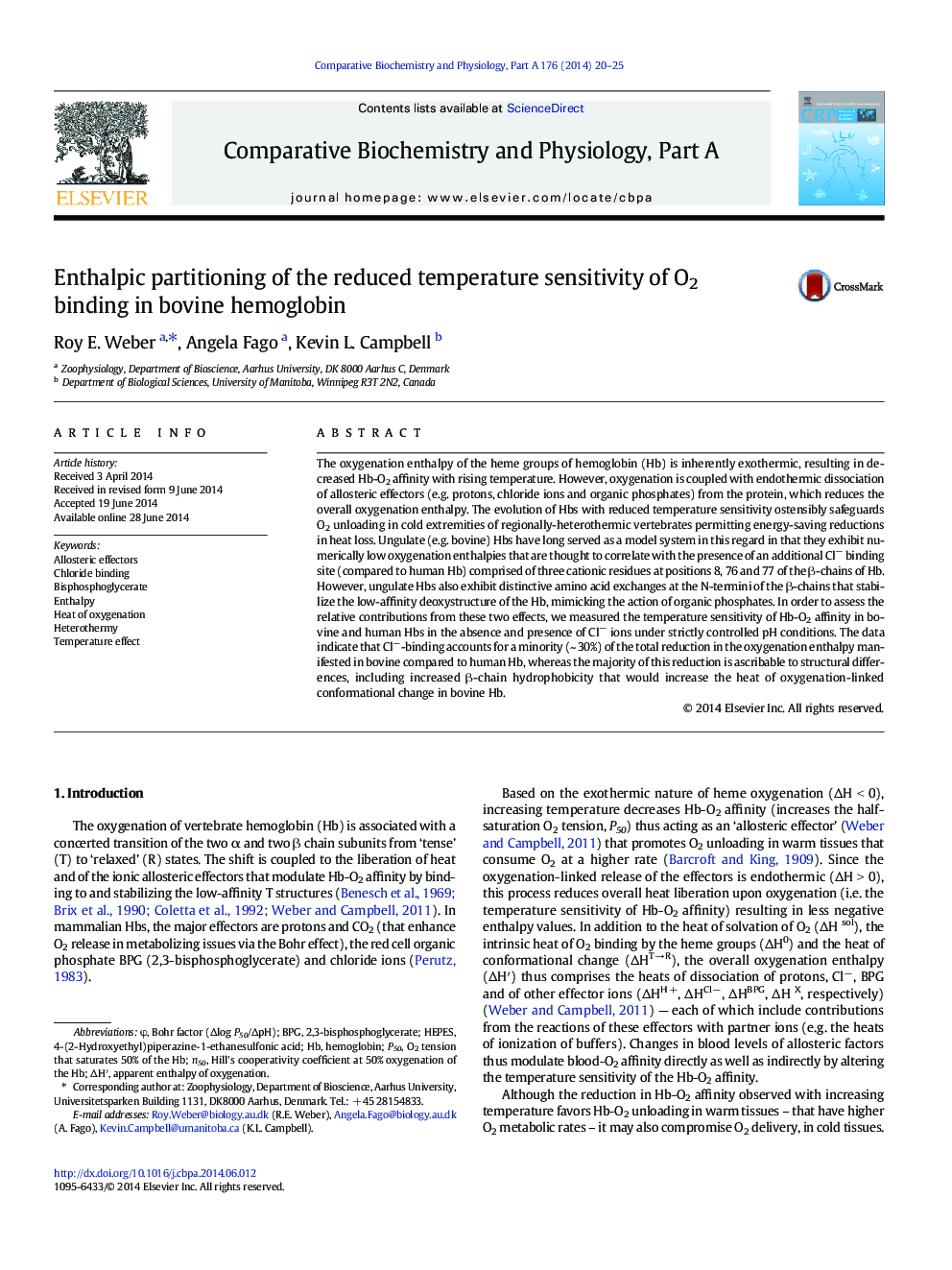| Article ID | Journal | Published Year | Pages | File Type |
|---|---|---|---|---|
| 1972181 | Comparative Biochemistry and Physiology Part A: Molecular & Integrative Physiology | 2014 | 6 Pages |
The oxygenation enthalpy of the heme groups of hemoglobin (Hb) is inherently exothermic, resulting in decreased Hb-O2 affinity with rising temperature. However, oxygenation is coupled with endothermic dissociation of allosteric effectors (e.g. protons, chloride ions and organic phosphates) from the protein, which reduces the overall oxygenation enthalpy. The evolution of Hbs with reduced temperature sensitivity ostensibly safeguards O2 unloading in cold extremities of regionally-heterothermic vertebrates permitting energy-saving reductions in heat loss. Ungulate (e.g. bovine) Hbs have long served as a model system in this regard in that they exhibit numerically low oxygenation enthalpies that are thought to correlate with the presence of an additional Cl− binding site (compared to human Hb) comprised of three cationic residues at positions 8, 76 and 77 of the β-chains of Hb. However, ungulate Hbs also exhibit distinctive amino acid exchanges at the N-termini of the β-chains that stabilize the low-affinity deoxystructure of the Hb, mimicking the action of organic phosphates. In order to assess the relative contributions from these two effects, we measured the temperature sensitivity of Hb-O2 affinity in bovine and human Hbs in the absence and presence of Cl− ions under strictly controlled pH conditions. The data indicate that Cl−-binding accounts for a minority (~ 30%) of the total reduction in the oxygenation enthalpy manifested in bovine compared to human Hb, whereas the majority of this reduction is ascribable to structural differences, including increased β-chain hydrophobicity that would increase the heat of oxygenation-linked conformational change in bovine Hb.
